As an expert in automotive technology, I am here to shed light on a crucial aspect of your vehicle’s performance—tire tread patterns. The tread pattern plays a significant role in maximizing the performance and safety of your tires. Understanding the importance of tire tread patterns can affect how your vehicle handles on the road.
This blog post will delve into the intricacies of different tire tread types and how they impact your driving experience. Whether navigating through rainy weather, snowy terrains, or dry roads, the correct tread pattern can significantly enhance your vehicle’s grip and stability.
The tread pattern is a crucial factor to consider regarding tire performance. Different tread designs are tailored to specific driving conditions and purposes, from all-season treads to high-performance patterns. By selecting the correct tire tread pattern for your driving needs, you can optimize your vehicle’s performance and ensure a safer journey.
Join me as we explore the fascinating world of tire tread patterns and unlock the secrets to achieving optimal road performance. Let’s dive into tire technology and discover how the correct tread pattern can transform your driving experience.
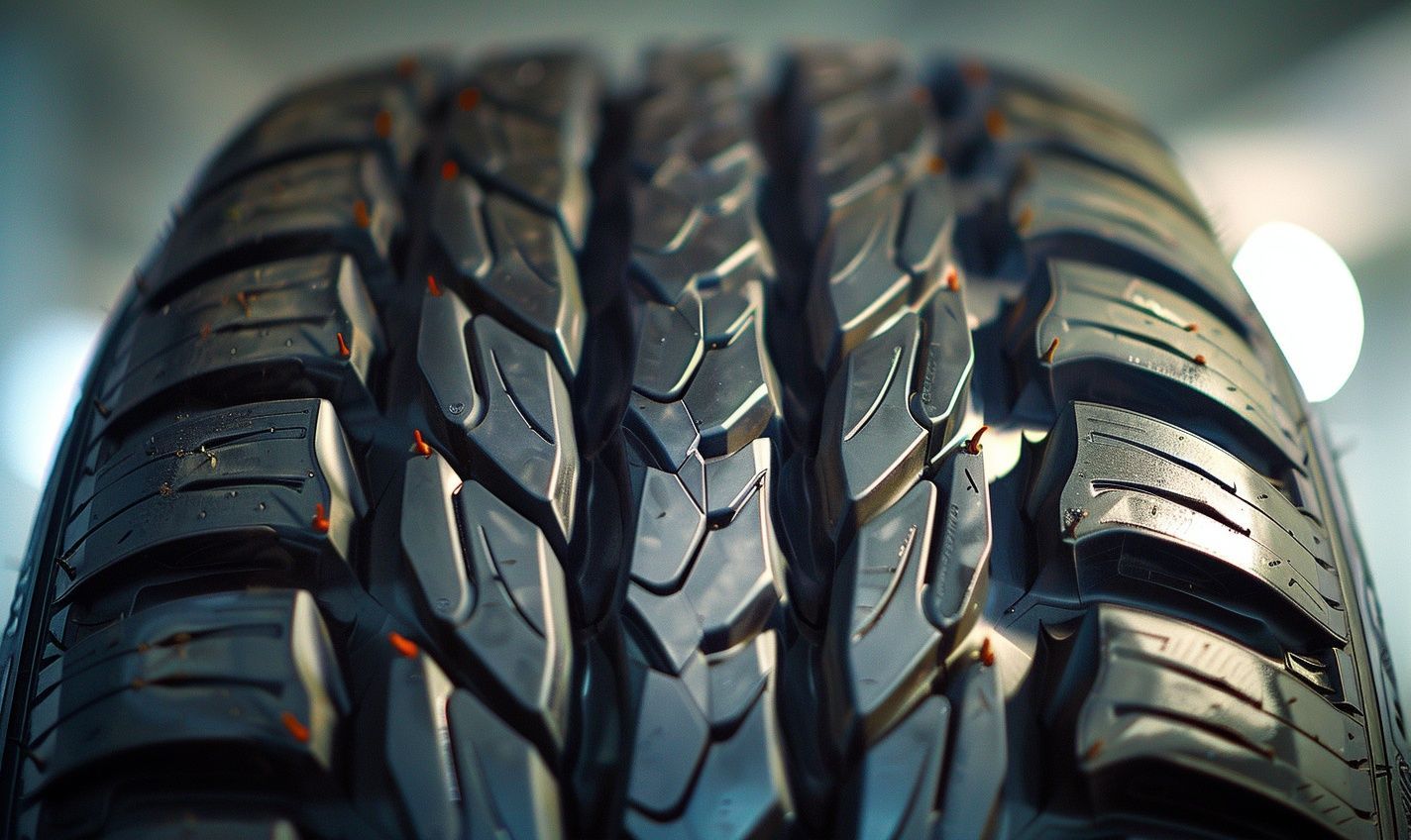
The Role of Tire Tread Patterns in Tire Performance
Understanding Tire Tread Patterns and Their Influence
Have you ever stopped to consider how critical your tire tread patterns are to the overall performance of your vehicle? Let’s dive into these patterns’ essential role in ensuring your safety and driving experience.
The Importance of Proper Tread Patterns for Safety
Picture your tires as the shoes of your car. Tire tread patterns are like the soles of your shoes – they provide the necessary grip and traction to keep you steady on any road surface, especially during challenging weather conditions.
Enhancing Traction with the Right Tire Tread Design
Imagine driving on a rainy day with bald tires – like walking on an icy sidewalk in smooth-soled shoes. Proper tire tread patterns help channel water away from the tire, ensuring consistent contact with the road and reducing the risk of hydroplaning.
Types of Tire Tread Patterns and Their Functions
Various tire tread types are designed for specific purposes, such as enhancing grip, improving fuel efficiency, or providing stability during high-speed maneuvers. These patterns are not just for aesthetics; they are carefully engineered to optimize different aspects of your driving experience.
Here are some common tire tread patterns and their functions:
- Symmetrical Treads – Offer a smooth and quiet ride.
- Directional Treads – Perfect for channeling water away in wet conditions.
- Asymmetrical Treads – Provide a balance of performance and comfort.
Maximizing Efficiency Through Optimized Tread Patterns
Think of your tire tread patterns as the secret sauce that enhances your vehicle’s overall efficiency. You can optimize fuel economy, extend tire life, and improve your driving comfort with the correct pattern.
The Impact of Tire Tread Patterns on Your Driving Experience
Why Do Tire Tread Patterns Matter?
Have you ever stopped to consider the importance of the intricate designs on your tires? Let’s delve into the world of tire tread patterns and discover how they can significantly impact your driving experience.
Improving Safety with the Right Tread Pattern
The tire tread pattern plays a crucial role in navigating roads safely. A well-designed tread pattern can enhance traction, reduce the risk of hydroplaning, and provide better handling in varied driving conditions.
Enhanced Performance Through Optimal Tread Design
Imagine your tires as shoes, your car’s shoes. The correct tread pattern is like having the perfect grip for the terrain. Different tread patterns are tailored to excel in specific environments, whether off-road adventures or smooth city streets.
Considering the vast array of tire tread types available, it’s essential to choose a pattern that aligns with your driving needs and preferences:
- All-Season Tread: Ideal for everyday driving, offering a balance of performance in various conditions
- Summer Tread: Provides excellent grip in dry conditions for those sunny road trips
- Winter Tread: Designed to tackle snow and ice, ensuring you can navigate safely through winter wonderlands
- Off-Road Tread: Perfect for adventurous souls seeking rugged terrains and challenging landscapes
Factors to Keep in Mind When Selecting a Tread Pattern
Considering your typical driving environment, weather conditions, and desired performance can help narrow your vehicle’s best tire tread pattern. Are you ready to take your driving experience to the next level?
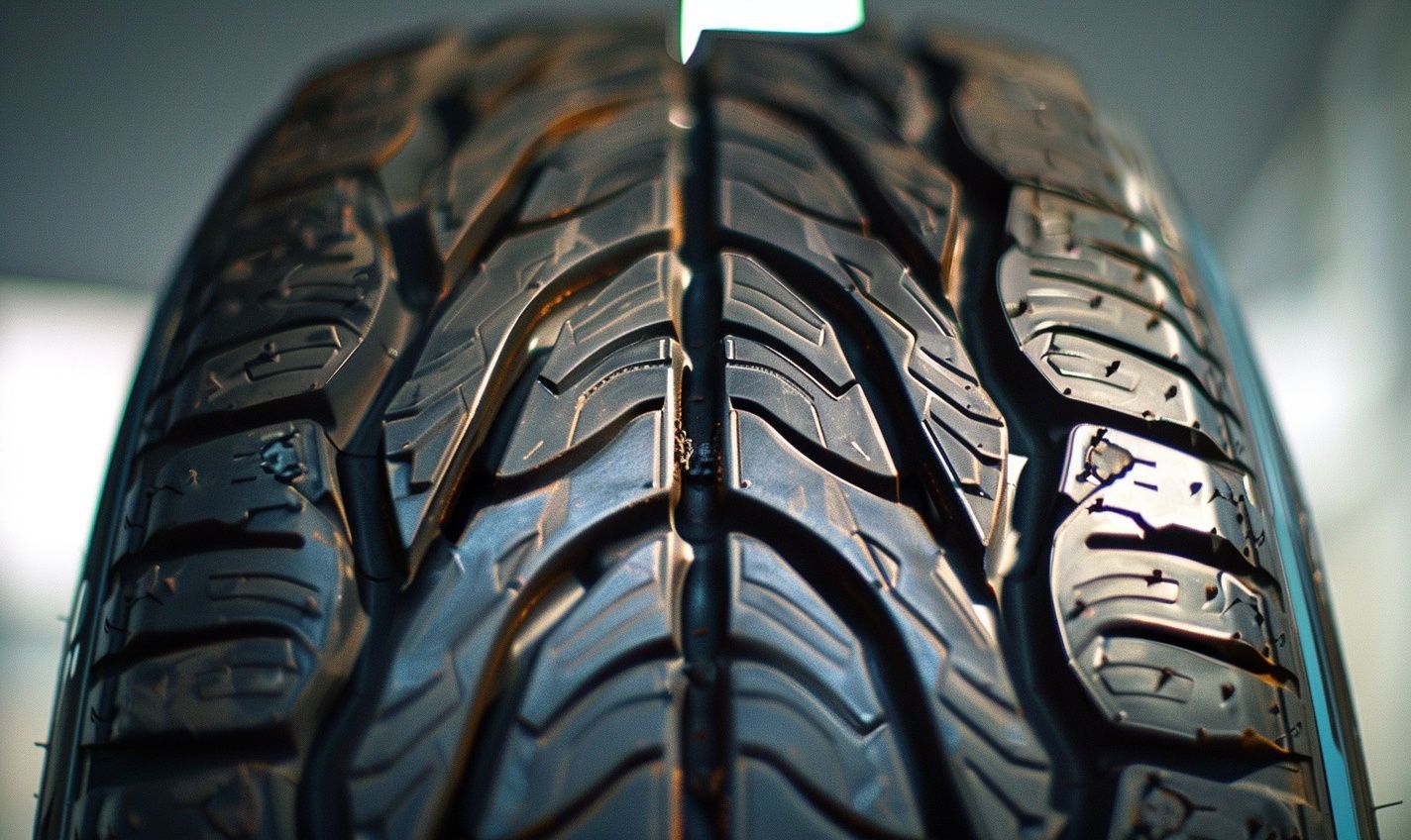
Understanding Tire Tread Patterns and Their Influence
Why Are Tire Tread Patterns Important?
Tire tread patterns might seem just a cosmetic aspect, but they play a crucial role in your tire’s performance and overall driving experience. Think of tire treads as your car’s shoes; you wouldn’t wear running shoes on ice, right? Well, your tires need the correct tread pattern for various road conditions.
Types of Tire Tread Patterns
When it comes to tire tread types, there’s a variety to choose from based on your driving needs:
- Symmetric Treads: Provide good all-round performance.
- Directional Treads: Enhance water evacuation for improved wet traction.
- Asymmetric Treads: Offer a balance of performance and comfort.
- Winter/Snow Treads: Designed for optimal grip in icy conditions.
The Role of Tread Pattern on Tire Performance
Tread patterns directly impact how your tires grip the road, handle corners, and perform in various weather conditions. Here’s how they influence your driving experience:
- Traction: Different treads provide varying levels of grip on different surfaces.
- Handling: Tread patterns affect how your car responds to steering inputs.
- Comfort: The right tread design can improve your driving experience.
Remember, the importance of proper tread patterns goes beyond performance; it’s also about safety. Proper treads can mean the difference between a smooth ride and losing control on a slippery road. So, next time you’re in the market for new tires, pay attention to the tread patterns and choose wisely to optimize your driving experience.
Unraveling the Mystery of Tire Tread Patterns
Tire tread patterns are not just about aesthetics but about maximizing your driving experience. Let’s explore the intricate world of tread designs and unravel the mystery behind their importance in enhancing tire performance.
Why Are Tire Tread Patterns Crucial?
Tire tread patterns significantly affect how your vehicle grips the road, disperses water, and maintains stability. They are not just random designs; each pattern aims to optimize your driving experience.
Types of Tire Tread Patterns
There are various tire tread patterns, each tailored for different driving conditions and performance needs. Here are some standard designs:
- Directional Treads
- Asymmetrical Treads
- All-Terrain Treads
- Winter Treads
The Impact of Tread Design on Handling
Imagine driving on a wet, slippery road with tires that have worn-out treads. It’s like trying to walk on ice with worn-out sneakers – a recipe for disaster. The right tread design ensures proper traction, handling, and stability, keeping you safe.
Choosing the Right Tread Pattern
When selecting a tire tread pattern, consider factors such as your typical driving conditions, weather patterns in your area, and your driving style. An all-terrain tread might be perfect for off-road enthusiasts, while winter treads are ideal for snowy climates.
Understanding the intricacies of tire tread patterns empowers you to make informed decisions about replacing or upgrading your tires. Choosing the right tread design enhances your driving performance and prioritizes your safety on the road.
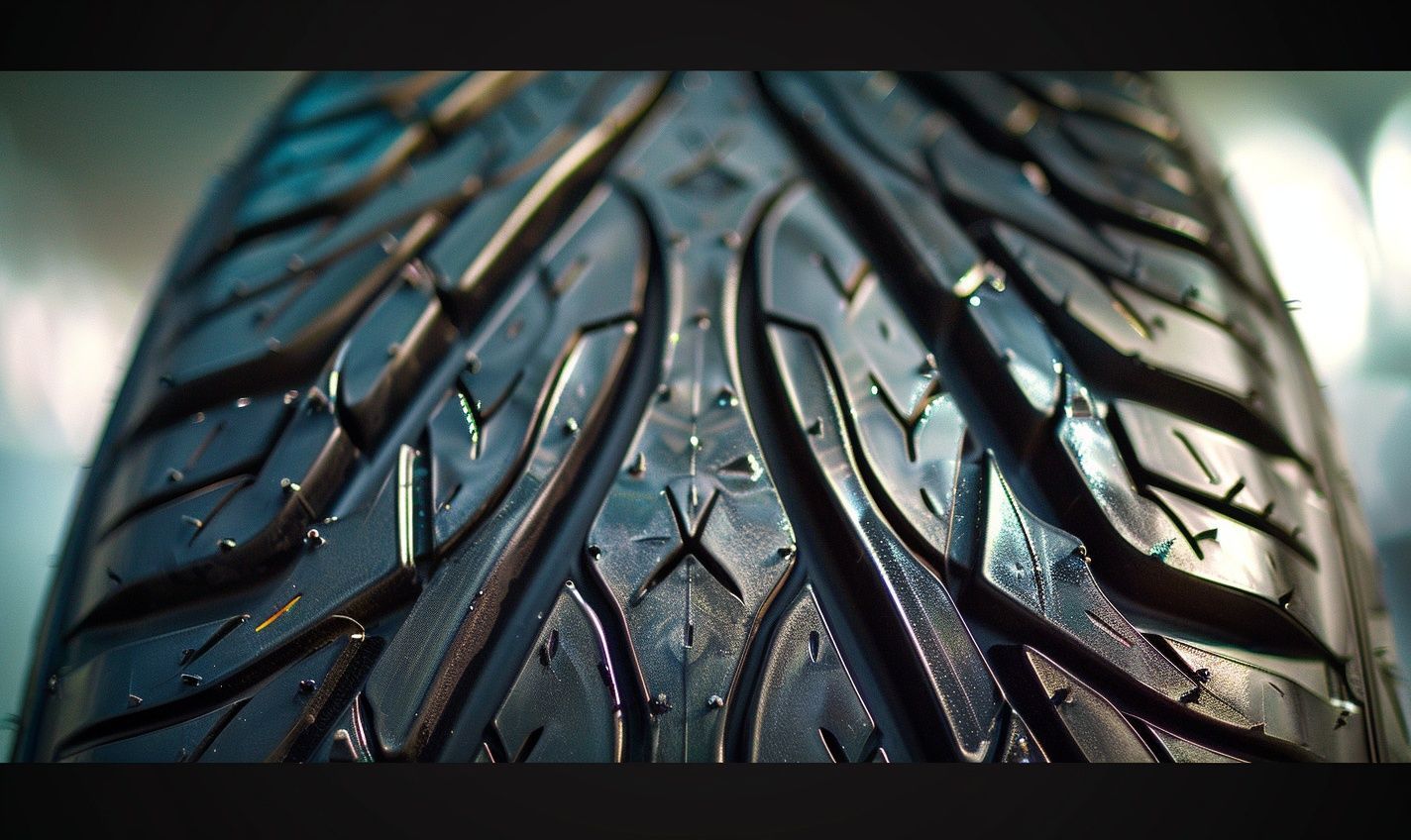
The Importance of Proper Tread Patterns for Safety
Tire tread patterns play a crucial role in the safety of your vehicle and those traveling with you. The design of the tread on your tires is not just about aesthetics; it directly impacts your safety on the road. Let’s explore why choosing the correct tread pattern is essential for keeping you safe behind the wheel!
The Role of Tread Pattern in Tire Performance
The tread pattern is more than just a design on your tires; it provides traction between your vehicle and the road surface. Good tread patterns disperse water, snow, or mud to maintain grip, prevent hydroplaning, and ensure stability.
Understanding Tire Tread Patterns and Their Influence
Did you know that different tread patterns are optimized for specific driving conditions? From all-season to off-road, each tire tread pattern is engineered to perform under particular circumstances, whether dry roads, rain, or snow.
Have you ever wondered why sports cars have different tread patterns than SUVs? The grip needed for high-speed cornering differs from off-road traction or winter driving. Each tire tread pattern serves a unique purpose to maximize safety and performance.
Enhancing Traction with the Right Tire Tread Design
- Deep grooves in the tread evacuate water for better-wet traction.
- Sipes and biting edges provide grip on snowy or icy roads.
- Large tread blocks enhance stability and handling on dry surfaces.
Choosing the correct tire tread pattern can significantly improve your vehicle’s traction and handling, keeping you safe in various road conditions.
Unveiling the Secrets Behind Tire Tread Performance
The Role of Tire Tread Patterns in Tire Performance
Have you ever stopped to think about the intricate tire tread patterns on your vehicle’s tires? They play a crucial role in ensuring your safety on the road.
Understanding Tire Tread Patterns and Their Influence
Think of tire treads as your car’s shoes – they provide grip, stability, and control on various road surfaces.
The Importance of Proper Tread Patterns for Safety
Did you know that the correct tread pattern can significantly impact your braking distance and ability to navigate through wet or snowy roads?
Here are a few key points to consider:
- Proper tread design enhances traction and reduces the risk of hydroplaning.
- Unique tread patterns are tailored to perform best in specific driving conditions.
- Regularly checking your tire tread depth can help prevent accidents and ensure optimal performance.
Enhancing Traction with the Right Tire Tread Design
Do you often drive in challenging terrains? A tire with deep grooves or sipes can provide the extra grip needed for off-road adventures or icy conditions.
Types of Tire Tread Patterns and Their Functions
Each tire tread type serves a unique purpose, from all-season to winter to performance-oriented treads. Selecting the right one for your driving needs is critical.
Common tread patterns include:
- Directional Treads for water evacuation.
- Symmetrical Treads for balanced performance.
- Asymmetrical Treads for sportier handling.
Remember, the proper tire tread can make all the difference in your driving experience. But are you paying enough attention to yours?
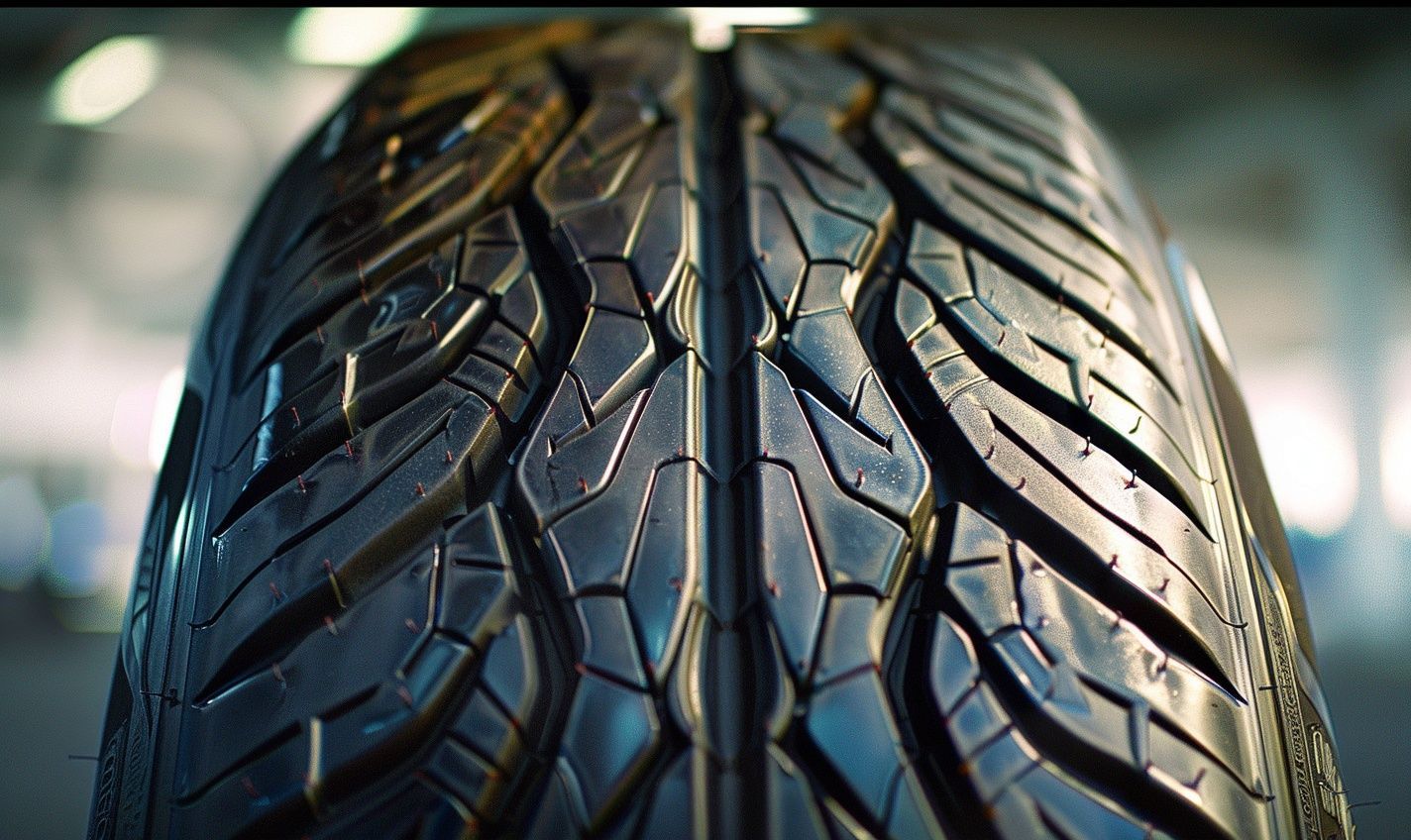
Enhancing Traction with the Right Tire Tread Design
Regarding your vehicle’s performance, the tire tread patterns are crucial in determining how well your tires grip the road. The right tread design can enhance traction, improve handling, and ensure a safer driving experience.
The Role of Tire Tread Patterns in Tire Performance
Have you ever wondered why some tires have deep grooves while others have intricate siping? It’s all about the tread pattern. This design isn’t just for looks; it directly impacts your tires’ performance on road surfaces and weather conditions.
Understanding Tire Tread Patterns and Their Influence
Think of tire tread patterns as your car’s shoes—each with a unique design catered to specific needs. Just like hiking boots provide traction on rugged trails, tire tread patterns are tailored to grip the road, channel water away, and adapt to different driving conditions.
The Importance of Proper Tread Patterns for Safety
Driving on worn-out or improper tread patterns is like walking on slippery ice with old sneakers. It’s a recipe for disaster. Ensuring your tires have the correct tread pattern can significantly impact your safety on the road, reducing the risk of hydroplaning and improving braking performance.
With the myriad of tire tread types available, choosing wisely based on your driving needs, climate, and road conditions is essential. Here’s a quick breakdown of common tire tread patterns and their functions:
- Directional Treads – Ideal for channeling water away for enhanced wet traction.
- All-Season Treads – Versatile design for various driving conditions.
- Winter/Snow Treads – Features unique compounds and siping for improved grip in snow and ice.
- Off-Road Treads – Aggressive patterns for traversing rugged terrains.
Choosing the correct tire tread pattern isn’t just about aesthetics. It directly impacts your driving experience, safety, and overall performance on the road. So, next time you’re in the market for new tires, pay attention to the tread design – it’s more than meets the eye!
The Heart of Your Tire: Understanding the Magic of Tire Tread Patterns
Have you ever stopped to think about the intricate design of your tire tread patterns and how they impact your driving experience? Tire tread patterns are not just there for looks; they play a crucial role in your tire’s performance, safety, and overall efficiency on the road.
The Importance of Tire Tread Patterns
Tire tread patterns are like your car’s shoes, providing grip, stability, and traction on various surfaces. Without the right tread design, your tires would struggle to navigate wet roads and muddy terrains or maintain a consistent grip on dry asphalt.
Types of Tire Tread Patterns
Several tire tread patterns are designed to excel in specific driving conditions. Understanding the different tread patterns can help you choose the best option for your driving needs:
- All-Season Tires: Versatile tread patterns suitable for a variety of weather conditions.
- Winter Tires: Aggressive tread designs for enhanced traction on snow and ice.
- Summer Tires: Optimized for warm weather performance with less grooving for better contact with the road.
Enhancing Performance with the Right Tread Design
Picture your tire tread patterns as tiny road warriors fighting against the elements to keep you safe. The right tread design can improve braking distance, cornering stability, and overall handling, giving you more control behind the wheel.
And just like you wouldn’t wear sandals in the snow, choosing the correct tread pattern for your driving conditions can make all the difference in how your car performs on the road.
Regarding tire tread patterns, it’s not just about aesthetics; it’s about functionality and safety. So, next time you glance at your tires, remember that those patterns are more than meets the eye – they are the unsung heroes of your driving experience.
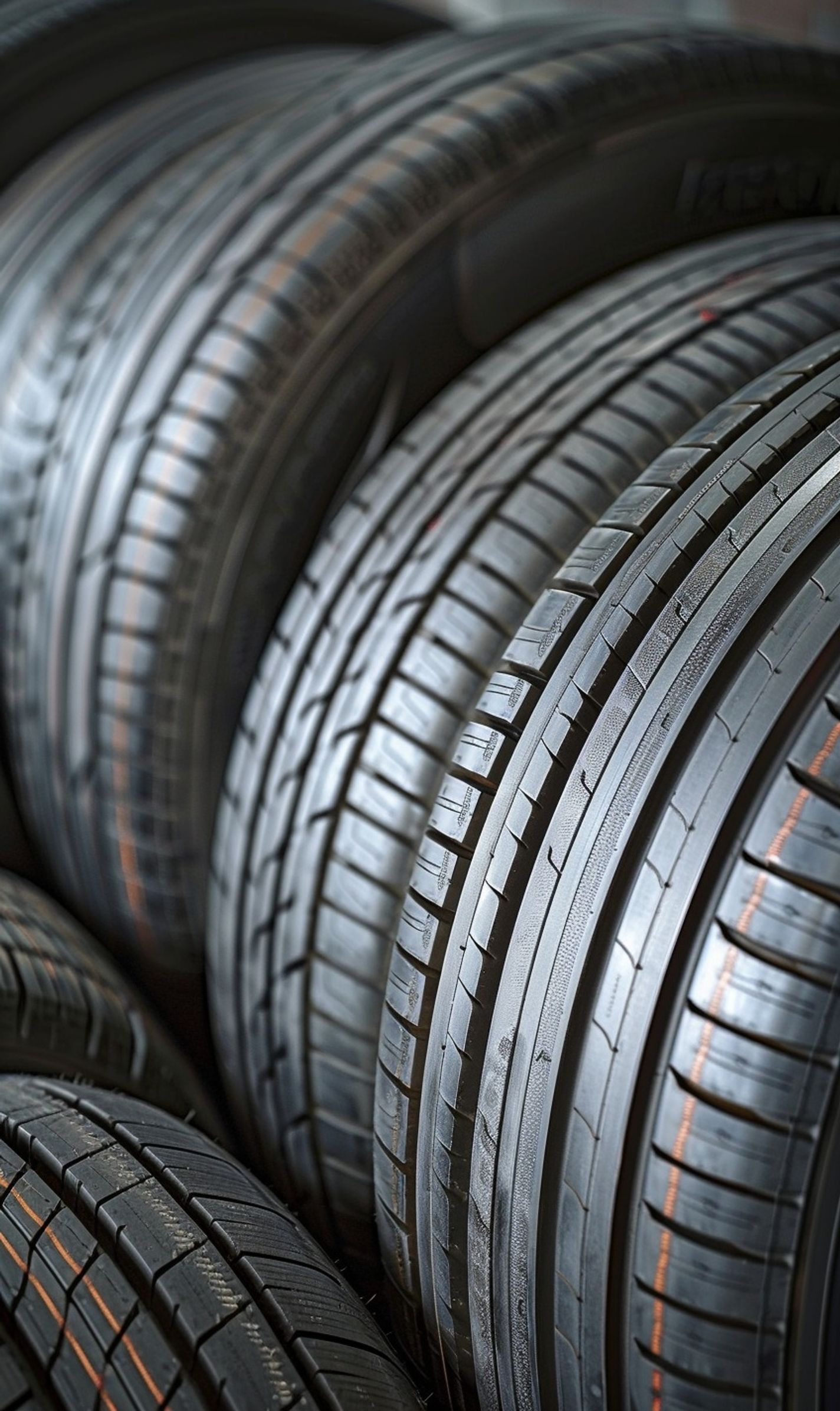
Types of Tire Tread Patterns and Their Functions
When it comes to tire performance, one crucial factor to consider is the tire tread pattern. The tread pattern significantly determines how well your vehicle grips the road, handles various driving conditions, and ensures safety.
The Role of Tire Tread Patterns in Tire Performance
Have you ever wondered why some tires have deep grooves, and others have intricate patterns? The tread pattern is not just for looks; it explicitly enhances your driving experience.
Understanding Tire Tread Patterns and Their Influence
The tire tread pattern affects how your vehicle performs in different weather conditions. Whether rainy, snowy, or dry, the right tread design can make all the difference in your driving experience.
The Importance of Proper Tread Patterns for Safety
- Proper tread patterns improve traction
- Enhanced grip for better braking
- Prevent hydroplaning on wet roads
Enhancing Traction with the Right Tire Tread Design
Think of the tire tread pattern as the shoes your car wears. Just like you wouldn’t wear dress shoes on a hiking trail, your tires need the right design to provide traction for the road ahead.
Choosing the best tread pattern for your driving needs can ensure a safe and enjoyable journey, no matter what Mother Nature throws your way.
Unleashing Performance: The Art of Tire Tread Patterns
The Dance of Tread Patterns and Tire Performance
Imagine your tires as the shoes of a professional dancer, effortlessly gliding and twirling on the dance floor. Just as different dance styles require specific shoes for optimal performance, your vehicle’s performance is significantly impacted by the tread patterns on your tires. Let’s dive into the fascinating world of tire tread patterns and how they influence your driving experience.
The Backbone of Driving Safety: Understanding Tire Tread Patterns
Have you ever considered how crucial tire tread patterns are in ensuring your safety on the road? The intricate grooves, sipes, and blocks on your tire’s surface are not merely for aesthetic purposes but play a vital role in providing traction, handling, and stability in various driving conditions.
The Road to Stability: Importance of Proper Tread Patterns
Just like hiking in the mountains with the right pair of shoes ensures a steady grip on uneven terrain, the correct tread pattern on your tires can make all the difference in maintaining control on wet, icy, or rough roads. Choosing the correct tread pattern is paramount for your safety and for others sharing the road with you.
Different Strokes for Different Folks: Tire Tread Types
There is no one-size-fits-all when it comes to tire tread patterns. Different types cater to specific driving needs and conditions. Here are a few common tread patterns and their functions:
- All-Season Tires: Suitable for various weather conditions
- Summer Tires: Provide excellent dry and wet traction
- Winter Tires: Designed for optimal grip in snow and ice
- Off-Road Tires: Feature aggressive tread for rough terrains
Maximizing Efficiency Through Optimized Tread Patterns
The Role of Tire Tread Patterns in Tire Performance
When you hit the road, have you ever stopped to ponder the intricate tire tread patterns on your wheels? Think of them as the shoes for your car, ensuring you grip the road with finesse.
Understanding Tire Tread Patterns and Their Influence
Did you know that different tire tread types can impact your driving experience? The correct tread pattern is paramount for a safe and smooth ride, from slick summer roads to snow-covered avenues.
The Importance of Proper Tread Patterns for Safety
Imagine being on a slippery road and your tires lacking the essential tread pattern for grip. It’s like wearing flip-flops on an icy sidewalk – a recipe for disaster!
Enhancing Traction with the Right Tire Tread Design
Have you ever felt your car slide on wet roads? That’s where the magic of a well-designed tire tread pattern comes in, offering you traction like never before.
1. Different road conditions demand tailored tread patterns.
2. Proper tread design is crucial for efficient water dispersion.
3. The proper tread enhances steering response and cornering stability.
The Foundation of Tire Performance: Understanding Tire Tread Patterns
The tread patterns of your vehicle’s tires play a crucial role in determining how well they perform on the road. Whether navigating through rainy conditions, tackling off-road terrain, or cruising on the highway, the design of your tire tread can significantly impact your driving experience.
Why Are Tread Patterns So Important?
Think of tire tread patterns as the shoes for your car. You wouldn’t wear running shoes to a formal event, but different tread patterns are tailored to specific driving conditions to enhance performance and safety.
What Are the Different Tire Tread Types?
There are several tire tread types designed to meet the diverse needs of drivers:
- All-Season Treads: Versatile patterns suitable for various road conditions.
- Summer Treads: Optimized for dry and wet performance in warmer weather.
- Winter Treads: Features tread blocks and sipes for improved traction on snow and ice.
The Impact of Tread Design on Traction
How the tread pattern is structured can significantly affect how well your tires grip the road. From deep grooves for channeling water away to sipes for biting into the snow, each element explicitly enhances traction.
Enhancing Stability and Handling with the Right Tread
Driving with worn-out or mismatched tread patterns can compromise your vehicle’s handling and stability. A well-maintained tread pattern ensures your tires can grip the road firmly, especially when taking corners or braking abruptly.
Choosing the Best Tread Pattern for Your Needs
Consider your typical driving conditions and preferences when selecting a tire tread pattern. Are you frequently driving in the snow? Do you prefer a smooth and quiet ride on the highway? Choosing the right tread design can optimize your driving experience.
Remember, the foundation of your vehicle’s performance starts with the tread patterns on your tires. By understanding the importance of tread design and selecting the correct pattern for your needs, you can enhance your driving safety, traction, and overall experience on the road.

Factors to Consider When Choosing the Right Tread Pattern
Choosing the correct tire tread pattern is crucial for ensuring optimal performance and safety on the road. With various options available, each serving a specific purpose, it’s essential to understand the factors that can impact your decision.
Driving Conditions
Consider the typical weather and road conditions you encounter. Are you mainly driving on dry, wet, or snowy roads? Tire tread patterns are designed to provide the necessary traction for different surfaces.
Vehicle Type
The type of vehicle you drive also plays a role in determining the most suitable tread pattern. A high-performance sports car may benefit from a different pattern than an SUV or a truck.
Driving Style
Your driving habits can influence the tread pattern you should choose. Do you prioritize speed and handling, or are you more focused on comfort and fuel efficiency? The correct pattern can enhance your driving experience.
Budget Considerations
While quality tire tread patterns can come at a price, balancing cost and performance is essential. Investing in a durable and efficient tread design can save you money in the long run.
Remember, tire performance is directly linked to the tread pattern on your tires. By considering these factors when selecting the correct pattern, you can improve your vehicle’s handling, stability, and overall safety on the road.
The Impact of Tire Tread Patterns on Your Driving Performance
Tire tread patterns are a crucial factor that is often overlooked when determining your vehicle’s performance. These intricate designs on your tires significantly ensure your safety, stability, and overall driving experience. Let’s delve into the world of tire treads and discover why they are more than just aesthetics.
Understanding the Importance of Proper Tire Tread Patterns
Have you ever considered why some tires have deep grooves while others feature a more intricate, zig-zag pattern? The tread pattern is not just for show—it is vital in enhancing driving performance.
Your tires could struggle to maintain traction without the right tread design, especially on wet or slippery roads. The patterns are designed to channel away water, prevent hydroplaning, and provide grip in various driving conditions.
The Role of Tire Tread Patterns in Tire Performance
Think of tire tread patterns as your vehicle’s shoes—different designs suit different activities and weather conditions. Just as running shoes have soles tailored for specific activities, tires with the correct tread patterns can optimize your driving experience.
- Deep grooves for off-road adventures
- Wide circumferential ribs for improved stability on highways
- Sipes for enhanced grip on icy roads
Types of Tire Tread Patterns and Their Functions
From all-season to winter tires, each type of tire has a specific tread pattern designed to cater to different driving needs. Understanding the various patterns can help you choose the best option for your vehicle:
- Directional
- Symmetrical
- Asymmetrical
- Mud-terrain
Remember, the correct tire tread pattern can improve your driving experience. Before hitting the road, ensure your tires have the appropriate design to maximize safety and performance.
Impact of Tread Design on Handling and Stability
Tire tread patterns play a pivotal role in tire performance. How your tires interact with the road surface can significantly impact your driving experience. One crucial aspect of tire tread patterns is their influence on handling and stability.
The Connection Between Tread Design and Driving Control
Imagine your tire tread as the shoes of your car. Just like the right shoes can provide grip and support for different activities, the tread pattern on your tires determines how well your vehicle grips the road.
But why is this so important? Let’s break it down:
- Different tread patterns offer varying levels of traction and grip on different surfaces.
- The depth and spacing of the grooves in a tread design impact how well the tire can channel water away, improving wet weather performance.
- The design can affect how well the tire handles corners, accelerates, and brakes, influencing overall stability and control.
Enhancing Your Driving Experience
Have you ever felt your car slipping on a wet road or losing traction on a sharp turn? That’s where the correct tread pattern can make all the difference. With a design tailored to your driving needs, you can experience the following:
- Improved grip on both dry and wet surfaces for safer driving.
- Better stability and handling, especially in challenging road conditions.
- Enhanced performance in acceleration, braking, and maneuvering.
By understanding how the tread pattern on your tires impacts handling and stability, you can make informed decisions when choosing the best option for your vehicle. Remember, it’s not just about having tires that look good – it’s about having tires that perform well and keep you safe on the road.
With the right tread design, you can enjoy a smoother, more controlled driving experience, giving you the confidence to tackle any road ahead.
The Art of Choosing the Right Tire Tread Pattern for Your Needs
Tire tread patterns significantly impact your vehicle’s performance and safety on the road. But with so many options available, how do you choose the perfect one for your driving needs? Let’s explore the world of tire tread patterns.
Understanding the Basics
What are tire tread patterns, and why are they crucial for your driving experience? Let’s break it down:
- Tread patterns are the designs on the rubber surface of your tires that come into contact with the road.
- They provide traction, handling, and stability in various driving conditions.
- The correct tread pattern can enhance your vehicle’s performance and keep you safe.
Types of Tire Tread Patterns
There are several tread pattern types available, each serving a specific function. Let’s explore a few:
- All-Season Tread: Suitable for a wide range of weather conditions, offering a balance of performance and longevity.
- Mud Terrain Tread: Features deep, aggressive patterns for off-road adventures and muddy terrains.
- Winter Tread: Equipped with sipes and grooves to provide optimal traction on snow and ice.
Choosing the Best Fit
When selecting the correct tire tread pattern for your vehicle, consider these factors:
- Your typical driving conditions – city, highway, off-road, etc.
- The climate in your region is dry, wet, snowy, etc.
- Your driving preferences – performance, comfort, fuel efficiency, etc.
Remember, selecting the ideal tire tread pattern is like choosing the right pair of shoes for a specific activity—you wouldn’t wear running shoes to a formal event.
So, next time you’re in the market for new tires, pay attention to the tread patterns and choose wisely to elevate your driving experience!
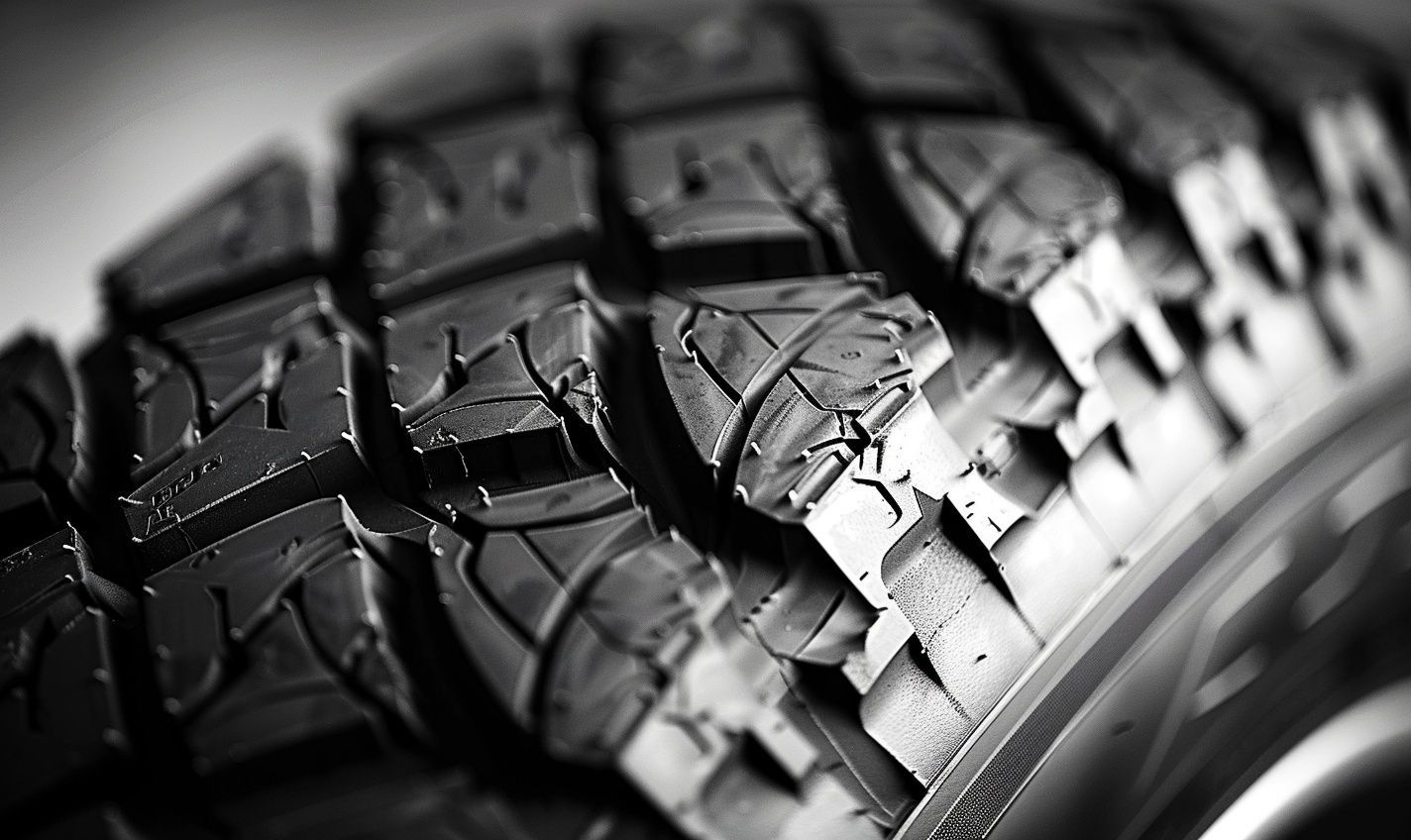
Exploring Different Tread Patterns for Various Driving Conditions
The Role of Tire Tread Patterns in Tire Performance
Regarding your driving experience, tire tread patterns are crucial in determining how well your vehicle performs on the road. A tire’s tread pattern is not just about looks; it directly impacts safety, traction, and overall stability.
Understanding Tire Tread Patterns and Their Influence
The tread pattern on your tires is like the shoe sole of your vehicle, providing the necessary grip and traction on different surfaces. With the correct tread pattern, you can navigate various driving conditions with confidence and efficiency.
The Importance of Proper Tread Patterns for Safety
Proper tread patterns are essential for maintaining road safety. They help prevent hydroplaning on wet roads, enhance braking performance, and ensure stability during cornering and maneuvering.
Enhancing Traction with the Right Tire Tread Design
Choosing the right tire tread design can significantly improve your vehicle’s traction on different terrains, be it wet, dry, snowy, or muddy surfaces. The tread design directly impacts how well your tires grip the road surface.
As you explore tire tread patterns for various driving conditions, it’s crucial to consider the following:
- The type of terrain you frequently drive on
- The weather conditions in your area
- Your driving style and preferences
Choosing the Best Tread Pattern for Your Driving Needs
Each tread pattern is designed to excel in specific driving conditions. By understanding the different tread patterns available, you can make an informed decision that aligns with your driving needs and ensures optimal performance.
The Impact of Tire Tread Patterns on Your Driving Experience
Regarding your vehicle’s performance on the road, one crucial factor that often gets overlooked is the tire tread pattern. This seemingly minor aspect significantly ensures your safety, stability, and overall driving experience. Let’s explore tread patterns and how they can affect your tires.
Understanding the Importance of Tire Tread Patterns
The tread pattern on your tires is not just for aesthetics – it serves a critical purpose in maximizing your vehicle’s performance. The right tread design can make all the difference in various driving conditions by providing traction, dispersing water, and maintaining stability.
Enhancing Your Driving Experience with the Right Tread Design
Have you ever slid on a wet road or struggled to maneuver through snow? Tire tread patterns are designed to prevent such scenarios by offering the necessary grip and handling capabilities. Choosing the correct tread pattern can significantly enhance your driving experience when navigating rough terrain or highway cruising.
But how do you know which tire tread pattern is correct for you? Let’s break down the different types:
- Directional Treads: Great for water dispersion, ideal for rainy conditions.
- All-Season Treads: Versatile pattern suitable for various weather conditions.
- Mud-Terrain Treads: Aggressive design for off-road adventures and muddy terrain.
By selecting the appropriate tread pattern based on your driving needs, you can ensure optimal performance and safety on the road.
Maximizing Efficiency Through Optimal Tread Patterns
Think of tire tread patterns as shoes for your vehicle. Choosing the correct tread pattern can maximize your efficiency and comfort while driving, just as you wouldn’t wear sandals in the snow or cleats on asphalt. It’s all about finding the perfect fit for your vehicle and driving preferences.
Choosing the Best Tread Pattern for Your Driving Needs
The Role of Tire Tread Patterns in Tire Performance
Have you ever considered how the design of your tire’s tread pattern can affect your driving experience? Well, let’s dive in!
Understanding Tire Tread Patterns and Their Influence
The tire tread pattern is crucial in how your vehicle grips the road surface. Different patterns serve various purposes.
The Importance of Proper Tread Patterns for Safety
Driving on tires with worn-out or improper tread patterns can significantly impact your braking distance and handling, compromising your safety.
Enhancing Traction with the Right Tire Tread Design
The correct tire tread design can improve traction, especially in challenging road conditions like wet or snowy surfaces.
Types of Tire Tread Patterns and Their Functions
There are various tire tread patterns, such as symmetrical, asymmetrical, directional, and winter-specific designs, each tailored for specific driving needs.
Maximizing Efficiency Through Optimized Tread Patterns
Optimized tread patterns can enhance fuel efficiency by reducing rolling resistance, leading to better mileage for your vehicle.
When choosing the best tread pattern for your driving needs, you must consider factors like road conditions, driving style, and vehicle type. Let’s explore how these factors can influence your decision.
– Road Conditions: Consider the typical weather and road surfaces you encounter.
– Driving Style: Consider if you have a more aggressive or gentle driving style.
– Vehicle Type: Different vehicles may benefit from specific tread patterns.
But how do you know which tread pattern suits you best? It’s all about understanding each type’s unique characteristics and benefits so you can make an informed decision. Think of it as selecting the right shoes for different activities; you wouldn’t wear hiking boots to a marathon!
So, next time you’re in the market for new tires, remember the impact of the tread pattern on your driving experience. Choose wisely, and drive safely!
The Significant Impact of Tire Tread Patterns on Your Driving Experience
Have you ever stopped to consider the intricate tire tread patterns on your vehicle’s tires? Unbeknownst to many drivers, these patterns play a crucial role in determining the overall performance of your tires on the road.
The Role of Tire Tread Patterns in Tire Performance
Your tires’ tread patterns are not just there for aesthetic appeal. They serve a fundamental purpose in enhancing your driving experience by providing:
- Improved traction on various road surfaces
- Enhanced grip for better handling
- Water dispersion to prevent hydroplaning
Understanding Tire Tread Patterns and Their Influence
Each tire tread design is crafted with specific functionalities in mind. From symmetrical patterns for standard driving conditions to directional patterns for optimized water evacuation, tread patterns are tailored to meet diverse driving needs.
Picture your tire treads as your vehicle’s shoes, each designed for a specific terrain. They provide the necessary grip to effortlessly navigate challenging road conditions.
The Importance of Proper Tread Patterns for Safety
Ensuring your tires have the correct tread pattern is paramount for your safety on the road. The proper pattern can make a difference, allowing you to confidently tackle sharp turns and sudden stops without compromising stability.
Think about it – would you wear snow boots on a sandy beach? Just like footwear, your tires need the correct tread pattern to perform optimally in their intended environment.
Enhancing Traction with the Right Tire Tread Design
Imagine driving in heavy rain with bald tires versus tires equipped with deep grooves designed to channel water away. The latter scenario offers superior traction, significantly reducing the risk of skidding or losing control.
With the correct tire tread pattern, you can enjoy a safer and more controlled driving experience regardless of the weather conditions.
Conclusion
In conclusion, understanding the significance of tire tread patterns is crucial for maximizing your vehicle’s performance and efficiency. The correct tread pattern can enhance traction, grip, and handling on various road surfaces and weather conditions.
By selecting the appropriate tire tread type based on your driving needs, you can ensure a smoother and safer driving experience. Whether you require all-season, winter, or off-road tires, the tread pattern plays a pivotal role in determining how well your vehicle responds to different challenges on the road.
Investing in high-quality tires with the right tread design can improve fuel efficiency, reduce stopping distances, and enhance overall vehicle stability. Remember, the tread pattern is not just about aesthetics but is critical in ensuring your safety and vehicle performance.
Next time you are in the market for new tires, pay close attention to the tread patterns offered and choose wisely based on the driving conditions you typically encounter. Your tires are the only point of contact between your vehicle and the road, so select the best tread pattern for optimal performance.
Frequently Asked Questions (FAQs)
What are tire tread patterns?
Tire tread patterns are the designs on the rubber surface of tires that contact the road.
Why are tread patterns important for tires?
Tread patterns are crucial as they provide traction, handling, and stability, especially in wet or icy conditions.
How do tire tread patterns affect tire performance?
The type of tread pattern can impact how well a tire grips the road, how quickly it wears down, and how smoothly it rides.
What are the main types of tire tread patterns?
The main types include symmetrical, asymmetrical, directional, and winter-specific patterns for different road conditions.
How often should I check my tire tread depth?
It’s recommended to check your tire tread depth at least once a month or before long road trips to ensure safety and optimal performance.
Can rotating tires help improve tread wear?
Yes, rotating tires regularly can help ensure even tread wear, extending the life of your tires and optimizing performance.